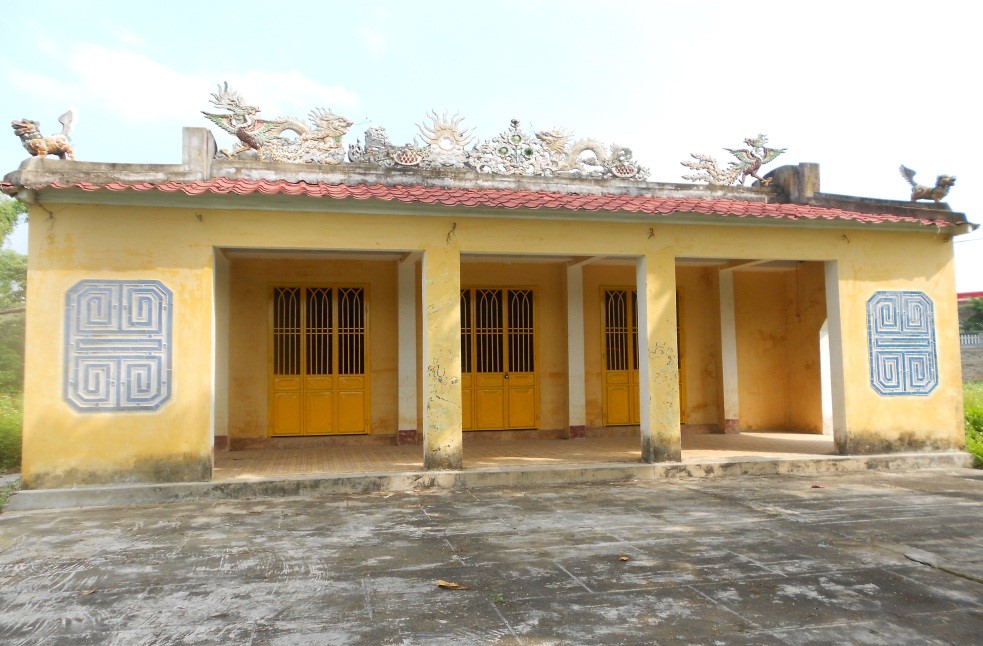Phu Hoa communal house preserves many precious royal decrees
Like many other village communal houses, the Phu Hoa Village Communal House is built to worship ancestors and gods. It is also a place for organising communal activities for villagers.
 |
| The Phu Hoa Village Communal House. Photo: D.G.H |
The Phu Hoa Village Communal House was recognised as a municipal-level historical and cultural relic on August 12, 2009. Currently, it not only features its ancient features but also preserves many precious royal decrees for future generations.
According to the village elders, the communal house was initially built around the end of the 18th century using available materials such as thatch, bamboo, and bamboo slats. The incense pot was only a drinking bowl. After that, the communal house had to be relocated 3 more times.
The communal house was first relocated in 1782. At that time, it was made of wood and thatched roof, with 4 pillars, surrounded by bamboo fences. However, because this was a low-lying area prone to flooding during the rainy season, so in 1788, the communal house was rebuilt on the Nong Lach Hill (a few hundred meters northwest of the current one).
Under the reign of Emperor Gia Long (1802), the communal house was relocated to the Cay Bang land in Bau Da District which is the current location. This place has beautiful scenery, good feng shui, and convenient transportation.
In the second year of King Minh Mang's reign in 1821, due to better economic conditions, the villagers decided to rebuild a more solid and spacious communal house. The communal house still exists until now and has undergone many embellishments due to the negative impacts of time and war.
During the resistance war against the French, the Phu Hoa communal house was a shelter and meeting place for the Party cells and was also used as a traffic trench and a fighting position for the nearby Don Cup.
The communal house was built in the southeast direction. The outermost are two pillars and a wall surrounding the communal house yard. There is a scroll screen -shaped relief showcasing an image of tiger on the surface.
Previously, the communal house had a four-roof architecture with a truss with four columns. In 1960, due to extensive damage, some parts of the village were repaired. In 2000, the communal house had a new yard built, while the remaining old architecture such as the back hall, stone walls, and wooden pillars were still kept.
Inside the communal house is the council altar in the middle. There are also two altars to worship ancestors and saints on the left and right sides. The communal house roof is covered with yin-yang tiles, and the yard built later is covered with cement tiles. The communal house roof and the roof of the back shrine are also decorated with dragons, phoenixes, unicorns, etc.
Every year, two main rituals are organised in the Phu Hoa communal house in spring and autumn. A ritual to pray for peace, happiness and prosperity throughout the whole year is being held on the 14th day of the third lunar month. Meanwhile, a ritual to honour ancestors takes place on the 15th day of the eighth lunar month.
Currently, the communal house still preserves 10 royal decrees. These royal decrees date from the reign of King Tu Duc to the reign of King Khai Dinh. These royal decrees are for the gods who have protected Phu Hoa villagers in particular and the country in general in daily life. The royal decrees are also valuable data in the research on the cultural history of Da Nang.
Reporting by DOAN GIA HUY - Translating by M.DUNG